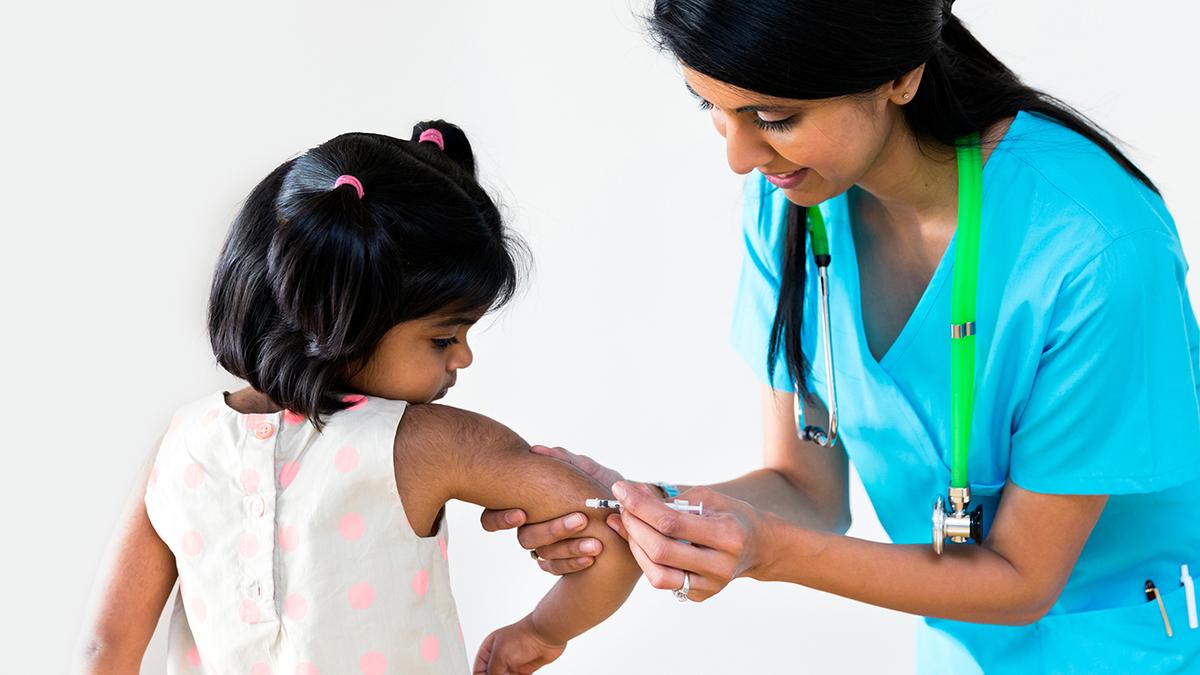
Sanitation and expanding rotavirus vaccination are key to combating diarrhoeal diseases in India: experts Premium
The Hindu
Diarrhoeal disease in India: causes, prevention, and treatment, including the impact of rotavirus vaccination on public health.
According to the World Health Organization (WHO), diarrhoeal disease is the third-leading cause of death among children aged 1–59 months, with 4,43,832 global deaths under five and an additional 50,851 deaths in children aged 5–9 years annually. India bears a significant share of this burden, with 1.7 billion childhood cases each year, largely due to unsafe water and poor sanitation -- issues affecting 780 million people without safe drinking water and 2.5 billion lacking improved sanitation.
Diarrhoea is also a leading cause of malnutrition, worsening children’s immunity. In India, rotavirus and E. coli are major risk factors, leading to severe dehydration and life-threatening complications. Prevention efforts include rotavirus vaccination, ORS (oral rehydration solution) and zinc therapy, and initiatives like Swachh Bharat Abhiyan, which aim to improve sanitation and reduce waterborne diseases.
According to Vaikunth Ramesh, resident, Department of Paediatrics, RML Hospital, Delhi, India has among the highest incidence of diarrhoeal illnesses worldwide, with children under five experiencing an average of 2 to 2.3 episodes per year. This rate surpasses those seen in other low- and middle-income countries (LMICs), where the incidence typically ranges between 1 and 1.7 episodes annually. “Over a five-year period, this means a child in India could experience up to 10 diarrheal episodes, and there is an urgent need for intervention,” Dr. Ramesh said.
Rotavirus accounts for approximately 10–20% of diarrhoeal illnesses in children and tends to be more severe than other viral diarrhoeas, often leading to hospital admissions.
There are notable regional variations in the prevalence of diarrhoea across India, the WHO says. southern India reports lower incidence rates of rotavirus-related diarrhoea, largely due to better implementation of sanitation and hygiene practices compared to northern regions. States such as Uttar Pradesh, Bihar, Madhya Pradesh, and Rajasthan experience a higher diarrhoeal burden, primarily due to weaker sanitation infrastructure. While improved access to clean drinking water and increased hygiene awareness have helped reduce diarrhoeal cases in urban areas, rural regions continue to face significant challenges.
Recognising early signs of dehydration is crucial, as symptoms such as lethargy and excessive thirst indicate worsening dehydration. Since the virus has a short incubation period of under 48 hours, parents should monitor symptoms and seek medical help if dehydration signs such as lethargy, irritability, and decreased urine output appear. While mild cases can be managed at home with oral rehydration solutions and adequate feeding, hospitalisation may be required for severe dehydration.
Deepa Hariharan, senior neonatologist, Chennai, emphasised the importance of hydration in managing rotavirus related diarrhoael diseases. “Since antibiotics are ineffective against rotavirus, rapid hydration is the primary treatment to manage symptoms,” she says.

The Airports Authority of India (AAI) team, which concluded the inspection of three locations that have been identified for Bengaluru’s second international greenfield airport, is expected to submit a feasibility report within a month, according to Infrastructure Development Minister M.B. Patil on Thursday





















 Run 3 Space | Play Space Running Game
Run 3 Space | Play Space Running Game Traffic Jam 3D | Online Racing Game
Traffic Jam 3D | Online Racing Game Duck Hunt | Play Old Classic Game
Duck Hunt | Play Old Classic Game










